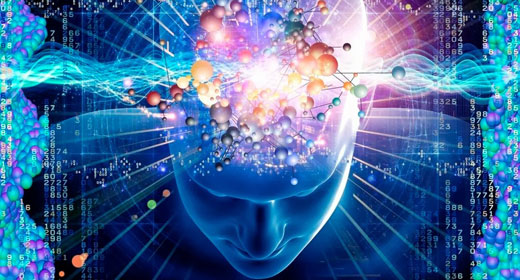by Prachi Patel: Researchers are training algorithms to emulate trained dogs’ ability to detect cancer and other diseases, perhaps including COVID-19…
Most people consider smell their least important sense, surveys suggest. Dogs, however, feel their way through the world with their noses. Humans already employ the animals’ olfactory acuity for contraband and explosives detection. More recently it has also proved uncannily good at sensing cancers, diabetes—and even COVID-19. Exactly how dogs detect diseases is a mystery, but that has not stopped researchers from mimicking this prowess with an artificial-intelligence-based noninvasive diagnostic tool.
In a study published in February in PLOS ONE, a multinational team reported an AI-powered system that is as accurate as trained dogs at correctly identifying cases of prostate cancer from urine samples. Massachusetts Institute of Technology research scientist Andreas Mershin, one of the study’s co-authors, wants to eventually integrate the technology into smartphones: There would be a tiny sensor in the phone with AI software running in the cloud. “We found we could repeat the training you use for dogs on the machines until we can’t tell the difference between the two,” he says.
Prostate cancer, the second most lethal cancer in men worldwide, is notoriously difficult to detect. The most widely used test, which checks for high levels of prostate-specific antigen, a protein in the blood, is prone to false-positive results and can miss 15 percent of cancers. Trained dogs, on the other hand, were able to identify patients with prostate cancer from urine samples more than 96 percent of the time in a 2015 study published in the Journal of Urology.
Yet dogs can get bored and tired, so researchers want to develop an artificial system that works more consistently. The quandary is that no one knows exactly what the dogs are smelling.
Living cells produce a bouquet of chemicals that emanate from the skin, blood, urine and breath. Artificial noses, including the “Nano Nose” that Mershin and one of his colleagues developed, can already detect those chemicals at the same parts-per-billion concentration as dogs. But a single compound or even a group of compounds does not necessarily signify the presence of cancer. Instead dogs recognize samples that are positive or negative for cancer by identifying complex patterns in the chemical mix. “Knowing what something smells of is not knowing what it is made of,” Mershin says. “[The dogs are] not picking up on a single molecule or bunch of molecules. They respond to a certain feeling. The signature on which we train them exists in a perceptual space.” In other words, it exists in the brain.
The team added to the chemical sensing an artificial neural network—a type of AI algorithm that can learn from looking at examples how to identify faces, for instance. Claire Guest, CEO of the U.K. organization Medical Detection Dogs, and her team first trained a Labrador retriever and a wirehaired vizsla to identify urine samples from prostate-cancer-positive and negative patients. Then they trained the neural network to imitate the dogs.
As part of this second step, the team ran each sample through gas chromatography–mass spectrometry, a chemical analysis technique that gives a molecular-level breakdown of compounds. The raw data was fed to the AI, which, after training, was able to spot positive cases 71 percent of the time and negative ones 70 to 76 percent of the time—an accuracy roughly equivalent to the dogs’. The AI zeroed in on the key data features and patterns linked with the dogs’ diagnoses, says study co-author and AI expert Stephen Thaler, president and CEO of the company Imagination Engines. “You show a network examples of healthy urine chromatographs, and it forms a model of normalcy,” he says. “Then when you pass a pathological sample input, it shows you where the anomalies are.”
This is a great first step toward revealing the method dogs are using to detect cancer, says Hiroaki Matsunami, a professor of molecular genetics and microbiology at Duke University, who was not involved in the study. “As scientists, we want to explain the phenomenon,” he says. “This approach makes the black box less obscure.” But if the goal is to diagnose prostate cancer, the accuracy is still pretty low, he notes.
The low accuracy of the AI system, which is only as good as the dogs’, stems from the small number of samples that were used to train the animals, Guest says. But as the 2015 Journal of Urology study showed, dogs can be trained to reach more than 96 percent accuracy, Mershin says, and the AI can be trained to reach that same rate. “Wherever you can get the dogs, we can get the devices.”
By devices, he means the Nano Nose sensor made in his lab, which uses olfactory proteins that help humans and rodents smell by binding to odor molecules. Mershin plans to train the AI algorithm using data from the Nano Nose, which is currently one third the size of an iPhone 10 and could be shrunk further to be integrated into smartphones. “The algorithm is agnostic to the data you feed it,” he says, so it should be able to detect any disease dogs can.
Those diseases might include COVID-19. Early small-scale efforts suggest that dogs can be trained to sniff out COVID infections. “There seems to be evidence that COVID patients might emit ammonia at trace levels that dogs could be sniffing,” says Otto Gregory, a University of Rhode Island chemical engineering professor who has developed extremely sensitive explosive-detecting electronic noses. Gregory, who was not involved in the study, and his team are now adapting the sensors to detect traces of ammonia in breath, which could change at the parts-per-billion level. It would be appealing, he says, to combine this chemical detection technique with AI-based pattern recognition to identify disease as well as our four-legged friends can.










































